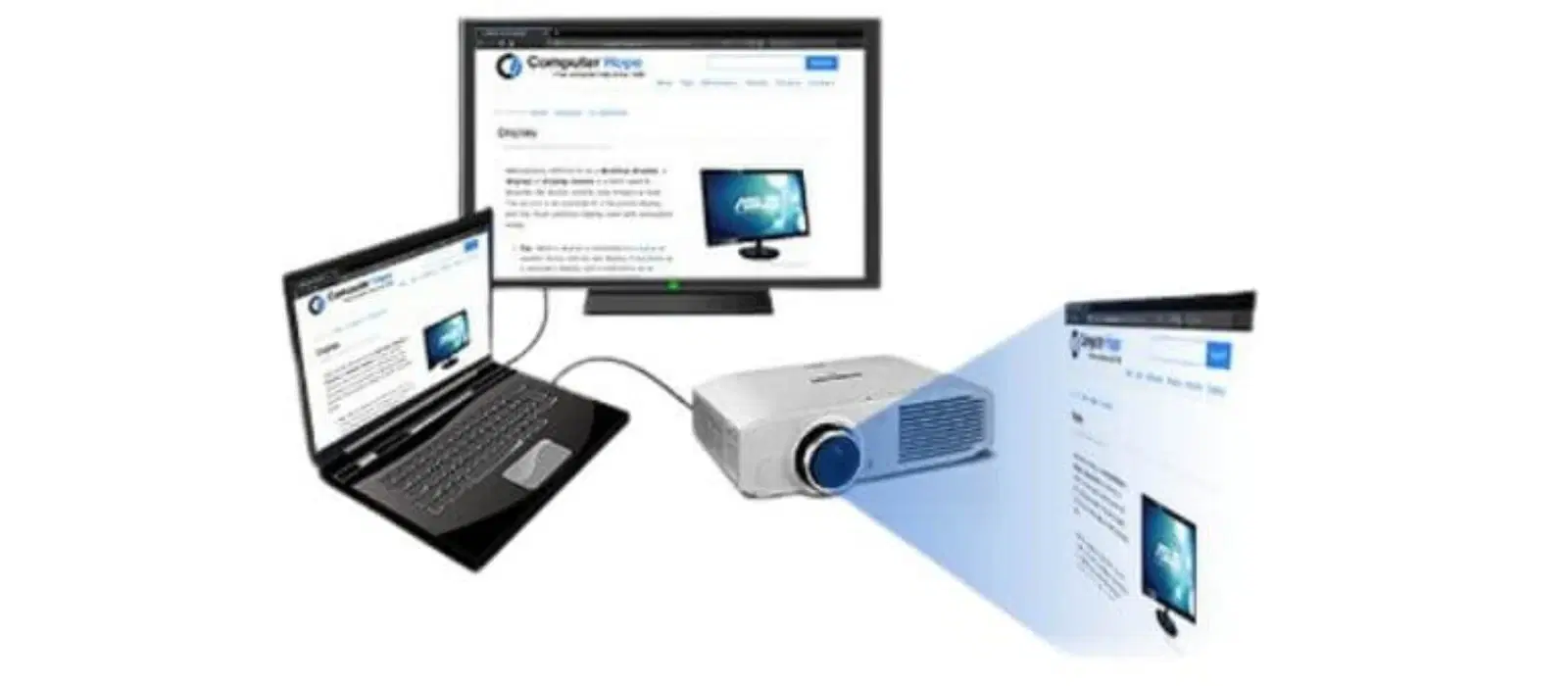
Consumer Electronics
•05 min read

Imagine this: You have an important presentation to make, or perhaps you are planning a cozy movie night with friends. No matter the situation, knowing how to connect a projector to your laptop can save the day. With this step-by-step guide, you'll learn the ins and outs of connecting your laptop to a projector, ensuring a seamless experience every time.
When it comes to connecting a projector to a laptop, there are several types of connections you may encounter:
HDMI: High-definition and widely used for its superior video and audio quality.
VGA: An older connection type, still prevalent in many projectors.
Wireless Options: Modern projectors often support wireless connectivity, making cable management a breeze.
Before you start, it's crucial to identify the available ports on both your laptop and projector. This will help you choose the right cable or adapter for a successful connection.
Ensure both your laptop and projector are turned off before making any connections to prevent potential damage.
Plug one end of the HDMI cable into your laptop and the other end into the projector.
Power on the projector first, then your laptop. This sequence helps the devices detect each other more efficiently.
After turning on your devices, configure the display settings:
Windows: Press 'Win + P' and choose the desired display mode.
Mac: Go to 'System Preferences' > 'Displays' > 'Arrangement' and select the preferred option.
Ensure both your laptop and projector are switched off before making connections.
Attach the VGA cable to both devices, and connect any necessary audio cables.
(45)-74f9fffb-62a7-47a7-8714-b26c94ed85c8.png&w=3840&q=75)
Turn on the projector first, followed by the laptop.
Configure the display settings on your laptop to ensure proper projection:
Windows: Use 'Win + P' to choose the display mode.
Mac: Navigate to 'System Preferences' > 'Displays' > 'Arrangement'.
Check if your laptop and projector support Wi-Fi or Bluetooth connectivity.
Leverage screen mirroring software like Miracast or proprietary software from your projector brand to facilitate wireless connections.
Tip: For the best display quality, ensure your projector's firmware is up-to-date and use high-quality cables. Tata Neu offers a wide selection of cables and projectors with advanced technology to meet your needs.
Ensure cables are securely connected.
Check the input source on the projector.
Adjust the laptop's display settings.
Verify if the projector lens cap is removed.
Clean the projector lens.
Ensure the screen is properly aligned.
Ensure the cables are connected correctly and the input source is selected properly on the projector.
Use screen mirroring software and ensure both your laptop and projector have wireless capabilities.
(44)-b4699c06-32bf-4cfd-a73e-6038a6eb6198.png&w=3840&q=75)
Clean the lens, adjust focus settings, and make sure the projector is properly aligned with the screen.
Connecting a projector to a laptop is straightforward once you understand the basics. By following the steps outlined, you can ensure a smooth setup and troubleshoot common issues easily. Remember, Tata Neu offers a wide range of projectors and accessories to enhance your experience. Enjoy rewards like NeuCoins, expert after-sales support, and express delivery to make your next presentation or movie night a success.
To maximize your projection experience, consider using accessories such as a wireless mouse for easier navigation during presentations, or an external speaker system for better audio quality during movie nights. Tata Neu provides a variety of accessories that can complement your projector setup.
Many modern projectors come with advanced features like keystone correction, zoom, and lens shift which can significantly improve your viewing experience. Familiarize yourself with these settings to make the most out of your projector.
Maintain your projector by regularly cleaning the lens and checking for firmware updates. This ensures long-term performance and prevents common issues related to dust and outdated software.
If you have multiple devices to connect, such as a laptop, a DVD player, or a gaming console, using an HDMI switcher can make the process seamless. This allows you to switch between different inputs without having to disconnect and reconnect cables.
Ensure the audio settings on your laptop are correctly configured to output sound through the projector or connected speakers.
Check the volume levels on both your laptop and projector.
If the wireless connection is unstable, try using a wired connection for a more reliable setup.
Restart both your laptop and projector to reset the connection.
Update your laptop's graphics drivers to ensure compatibility with the projector.
Test the connection with a different cable to rule out cable issues.
Both Windows and Mac laptops offer advanced display settings that allow you to customize the projection according to your needs. You can adjust the screen resolution, change the display orientation, and calibrate the colors for the best output.
Projectors come with different modes such as presentation mode, cinema mode, and game mode. Choose the appropriate mode based on the content you are displaying to optimize the image and sound quality.